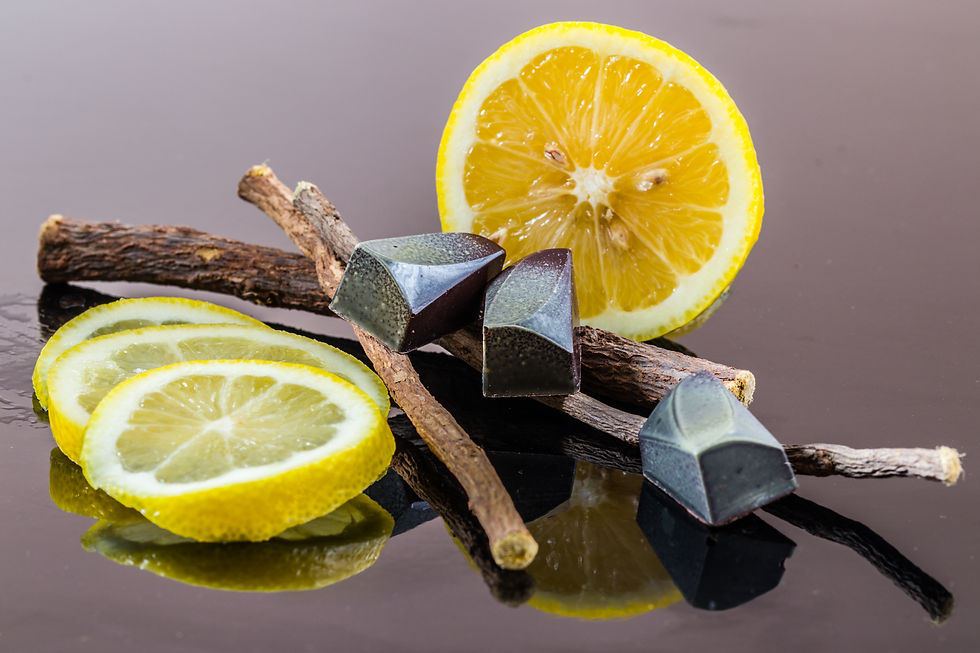Licorice root is an adaptogenic herb that thrives in USDA growing zones 6 through 11. It is well known for its strong candy flavor but is a valuable medicinal herb for treating many illnesses.
Glycyrrhiza glabra and Glycyrrhiza uralensis are medicinally similar, but here we are referring to Glycyrrhiza glabra. It is a member of the legume/pea family (Fabaceae).
How to recognize:
Glycyrrhiza glabra grows to approximately 3 feet tall (0.9m). Its pinnate leaves (leaflets arranged on each side of stem - opposite each other) are 3 to 6 inches long with 9 to 17 leaflets each. The purple to pale blue flowers are about 1/2 inch long, growing in a loose inflorescence. In the fall the plant produces fruit in the form of an oblong pod, each of which contains several seeds. The root produces runners growing close to the surface.

Medicinal Use:
The roots and leaves contain many types of compounds that are medically active: coumarins, triterpenoids, glabrene, and polyphenols. These compounds are antibacterial, antiviral, anti-inflammatory, and include natural steroid compounds.
Glycyrrhizin, one of the compounds of licorice roots can cause side-effects if overused or take in large doses. Be aware of all side-effects and interactions before using licorice root.
You can also get deglycyrrhizinated licorice (DGL) which has the glycyrrhizin removed, thus preventing its side effects.
Leaky Gut Syndrome and Inflammation
Leaky gut, or intestinal permeability, is an inflammatory disease of the intestinal tract. Licorice root soothes the intestines and reduces inflammation in the gut and throughout the body.
Peptic Ulcers:
Licorice root is effective against Helicobacter pylori bacteria that cause peptic ulcers. The root kills the bacteria and helps heal the ulcer in most people.
Heartburn, Stomach Problems, and Acid Reflux:
Licorice root has shown to be effective against indeigestion heartburn, acid reflux, indeigestion, stomach pain, and nausea.
Fertility Problems, PMS, and Menopause Symptoms:
Licorice root has an estrogen-like effect in women, due to the compound glabrene, which is phytoestrogen. It has been shown to help menstrual and fertility problems. When used as a hormone in placement therapy, it reduces hot flashes and other symptoms of menopause due to the compounds liquiritigenin and glabrene.
Cancer:
Licorice root may aid in the treatment of prostate and breast cancers. Research is still in progress on the use of licorice in cancer treatment, but the early results are promising.
Hepatitis C:
Glycyrrhizin is an anti-viral and an inflammatory. It may act against the virus causing hepatitis C and helps reduce long-term liver damage from the disease. Herbalists use glycyrrhizin to treat hepatitis C that does not respond to traditional treatments.
Immune System, Antiviral, Antioxidant:
Licorice has proven antiviral, antibacterial, and anti-oxidant effects, boosting the work of the immune system. As an antiviral, it helps prevent diseases such as hepatitis C, HIV, and Influenza.
The Common Cold, Cough, and Sore Throats:
In addition to its antiviral and anti-bacterial benefits, licorice root also acts as an expectorant, lossening and expelling mucus from the throat and lungs.
It is soothing and anti-inflammatory, which helps relieve the symptoms of sore throats. Use licorice root or leaves in tea, syrups, or to make cough drops for use against sore throats. It can also be used as a gargle.
Respiratory Issues:
Licorice is useful in treating respiratory problems. It helps the body produce and expel mucus, which keeps the respiratory system clean and functioning properly. Used for COPD as well.
Treats Eczema, Skin Rashes:
Licorice acts as a hydrocortisone to alleviate eczema, cellulitis, and folliculitis. Its anti-inflammatory benefits also hlep reduce swelling and irritation in skin conditions. Use licorice topically in a cleansing tea or in lotions or gels to relieve itching, redness, scaling, and inflammation caused by eczema or other skin problems.

Recipes, Liquid Extract:
Licorice extract is a common form of licorice, it is used as a sweetener in candies and some beverages.
**Limit your use of licorice extract to 30mg/ml of glycyrrhizic acid. Higher doses can cause side-effects.
Licorice Leaf Tea: Use dried and crushed licorice leaves as a tea to promote health of the digestive and respiratory tract. Use 1 tsp of crushed leaves per 1 cup of boiling water.
DGL Licorice: DGL licorice is a commerical form of licorice with the glycyrrhizin removed. It is considered a safter form of licorice root and is particularly recommended for long term use. DGL is available commerically.
WARNING: Long-term use of licorice root or high doses can have serious side effects. Most of the side effects are due to the presence of glycyrrhizin, so using DGL licorice reducts the risks.
Watch for these symptoms: low levels of postassium in the body, hypokalemia, muscle weakness, fluid-retention and swelling, metabolism abnormalities, high blood pressure, heart rhythm irregularities, erectile dysfunction, potential drug interactions.
Pregnant or breastfeeding women should avoid licorice in all forms. Patients who are prone to hypertension should also avoid licorice root.
Also avoid use of licorice root if you have heart, liver, or kidney problems. Stop taking licorice root at least two weeks before surgery.
Comments